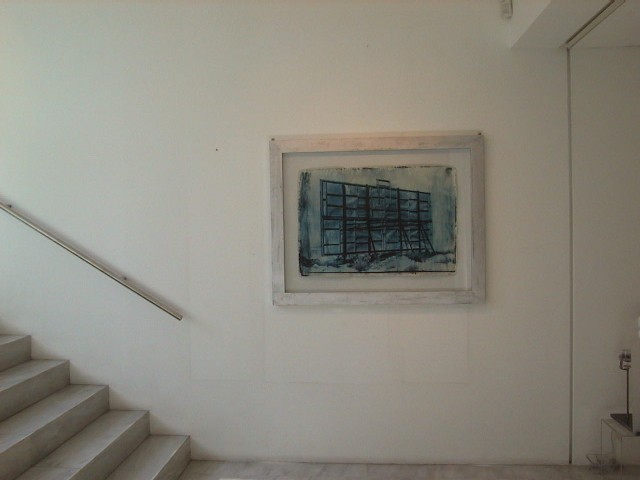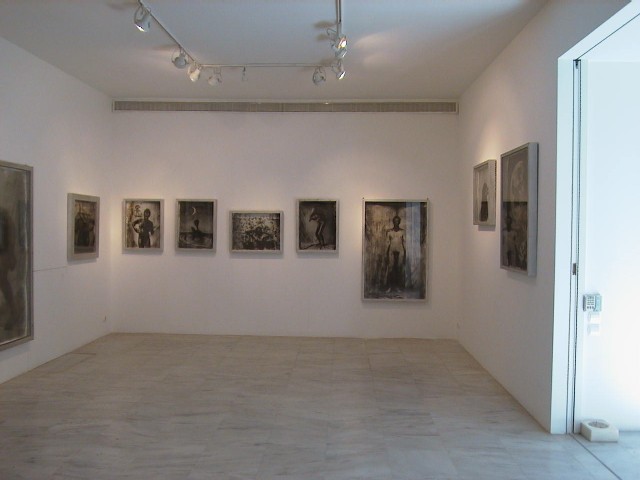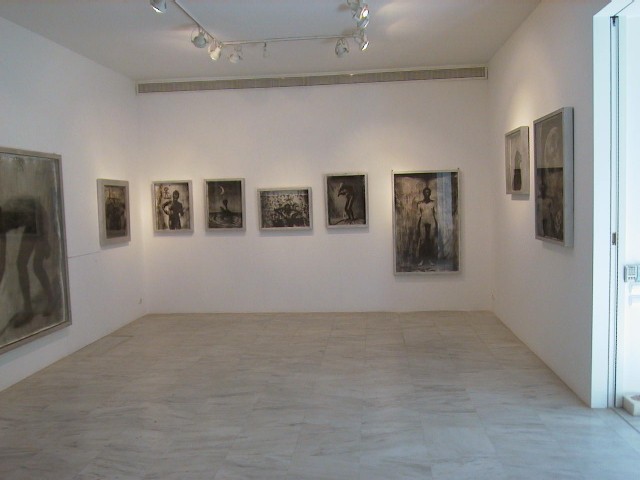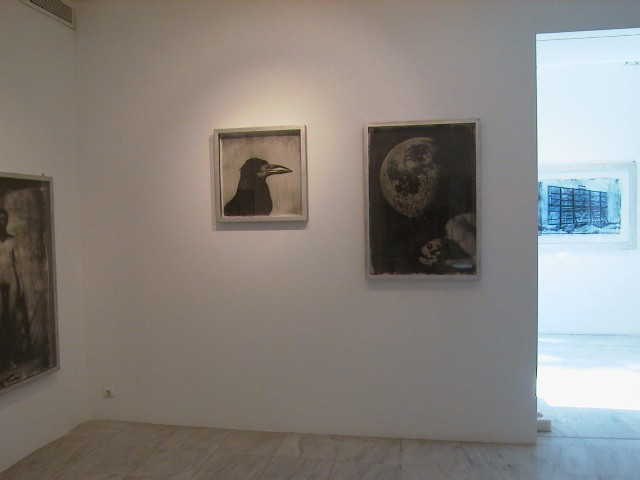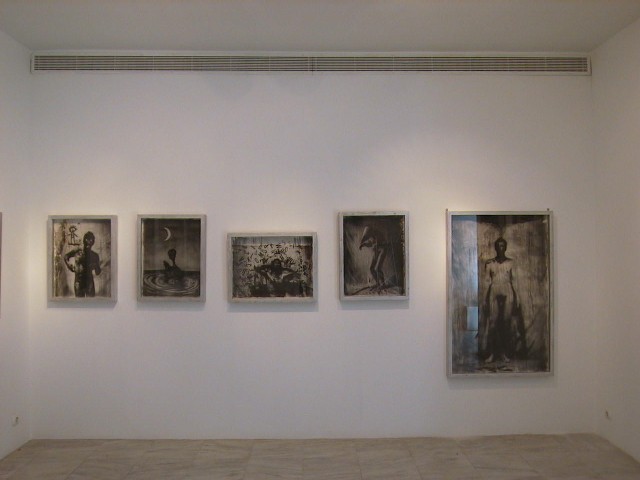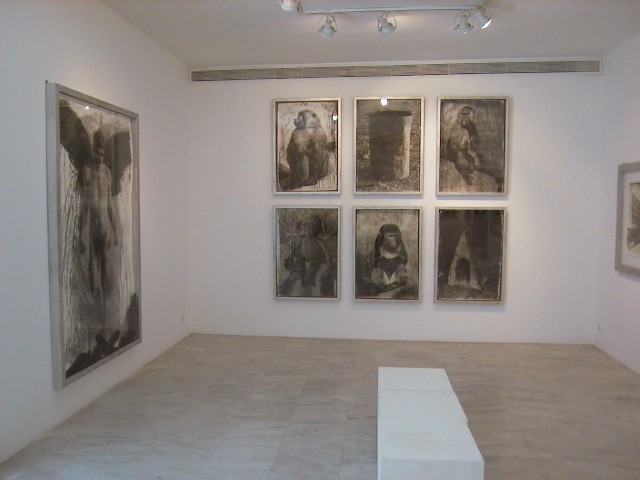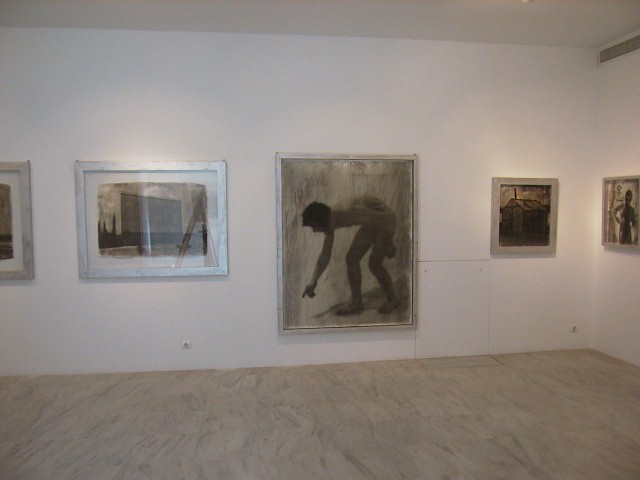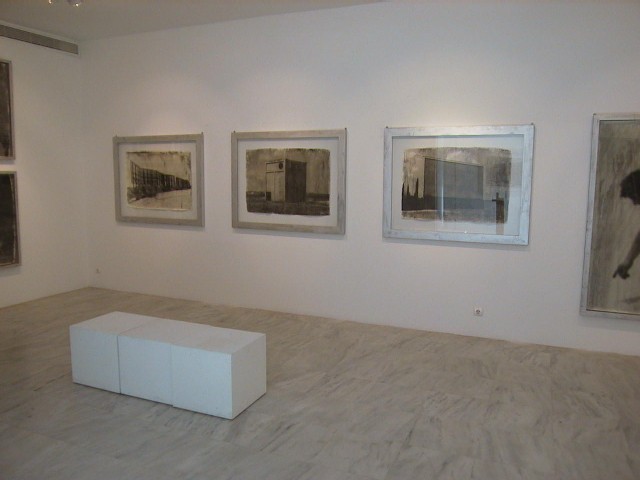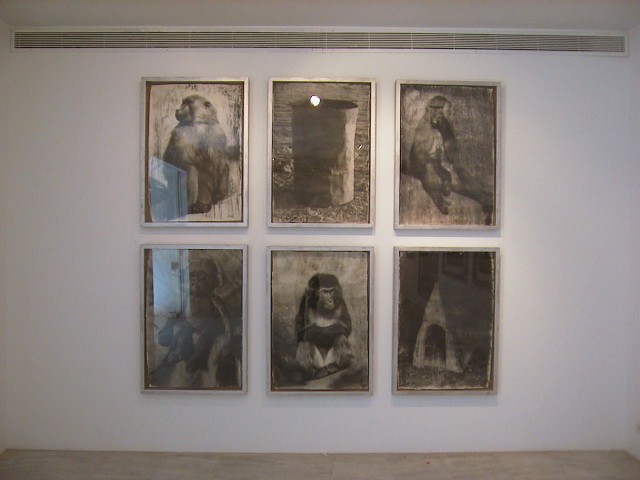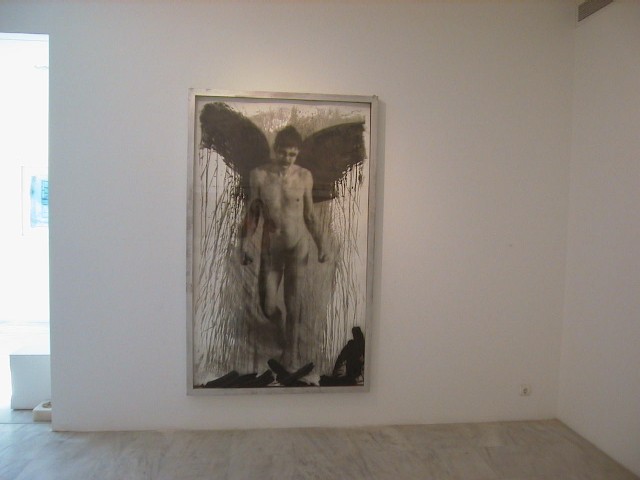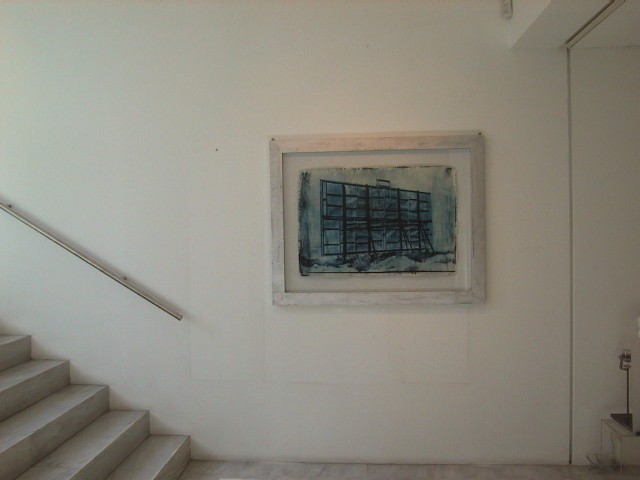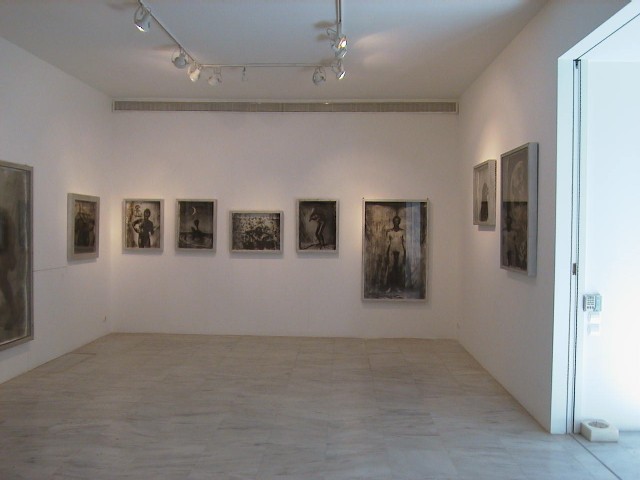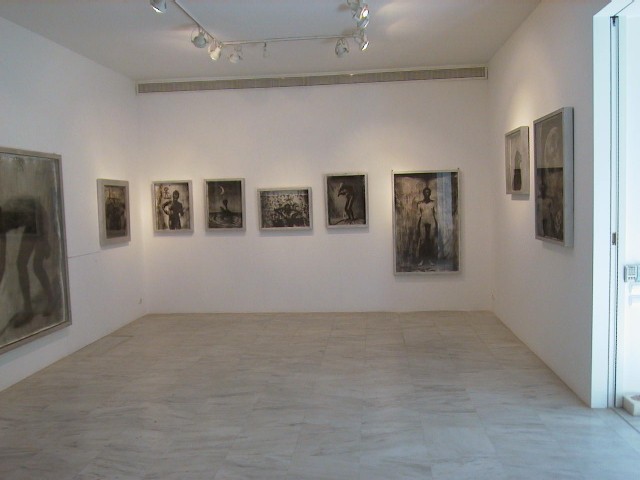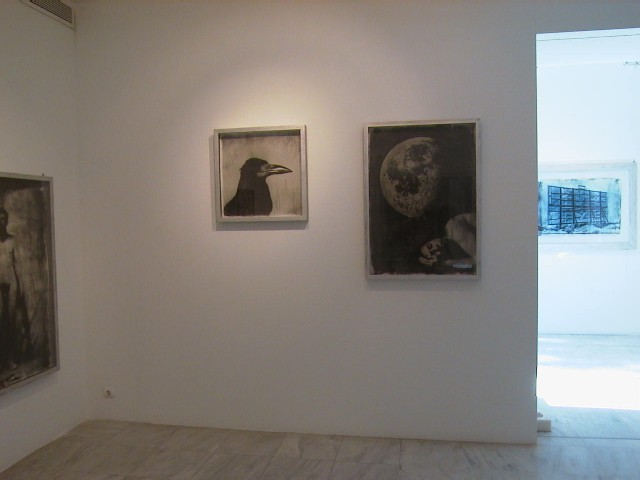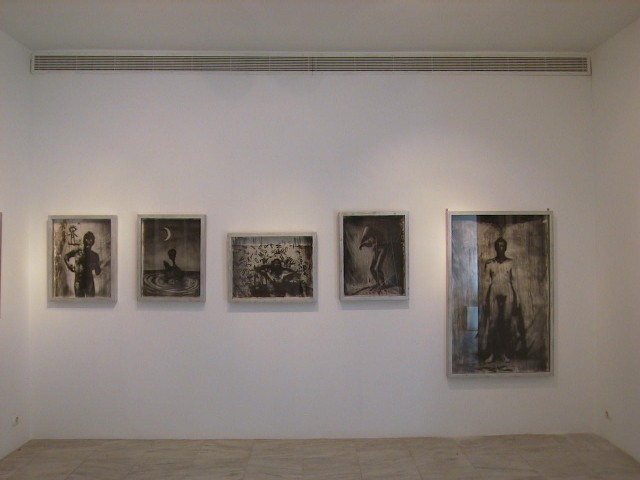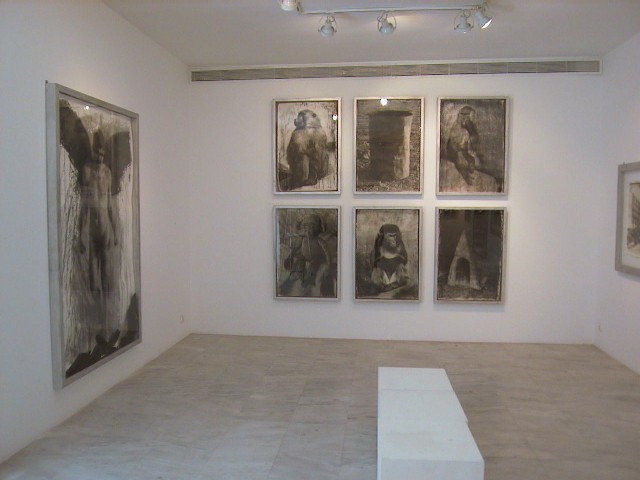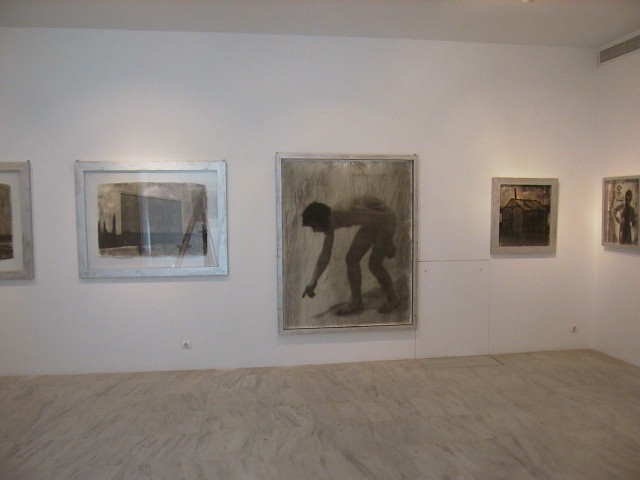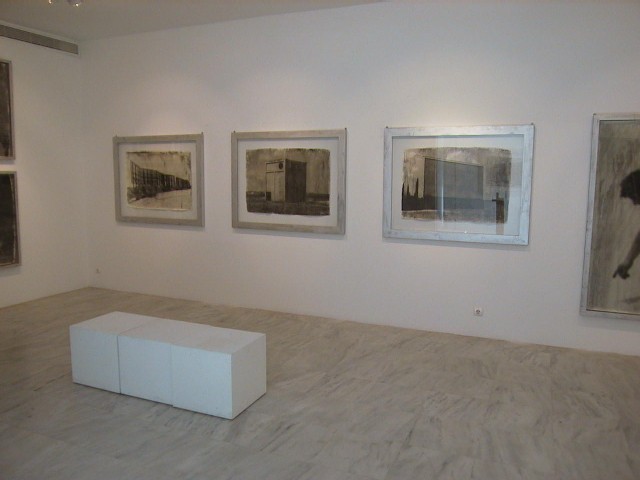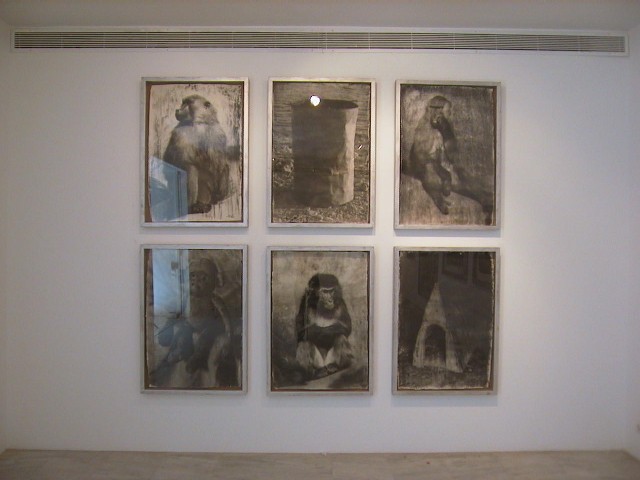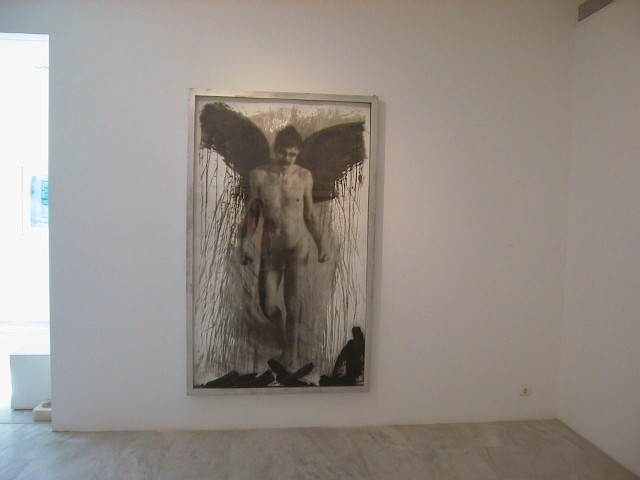EPENDYTIS newspaper, 16 February 2002
Vivi Vassilopoulou
Armed with Humour, let’s go to “Medusa”
It’s been many years since we last saw an exhibition of Antonis Nikoglou at the Medusa – since 1988. In the meantime there was Thessaloniki, Paris and Cologne. Now he is at “Medusa” again, because he knows how to come back when there is a reason or a doubt he wants to share with us and ask for our participation. Anton’s world is spherical yet minimalist, consciously commenting and commented upon, created after some arduous inner digging and ready to openly reveal itself without inhibitions or pretexts.
An obvious privilege retained by the artist is the grey colour which covers with vagueness everything that must not or cannot be determined.
The whole work emerges as serious but not pompous, self-sarcastic, with humour as existential awareness, as class distinction and above all as class division – between those with and without a sense of humour. The blacker this humour is the better. Anton carries on in a highly personal style, at the same time testing the level of osmosis between photography and visual art and the degree to which this relationship has matured in his work.
ELEFTHEROTYPIA newspaper, 4 February 2002
Maria Marangou
[…] Let us come now to some good exhibitions by relatively young painters, starting with the highly sensitive Antonis Nikoglou (Anton) at the Medusa gallery. The artist starts from photographs which he processes with his brush, i.e. he employs mixed media and techniques to defend the concept of the transformations of the self-portrait. Theatrical postures of the bodies, surrealistic elements with symbolic connotations, a realistic rendering which unfolds an elliptical narrative as it takes selective elements from across the history of art.
ESTIA newspaper, 25 February 2002
Krista Konstantinidi
More painting
The work of Antonis Nikoglou is not strictly painting. It is based on photographic material which he processes by spreading it with a brush and arriving at a painterly effect. It is this ambiguity that makes it interesting. We could say that the central theme of this series at the Medusa is the transformation of the self-portrait. At once dramatic and sensitive, the figures carry surrealistic elements rendered in a realistic style and presented in a theatrical spirit. Atmospheric images through which the artist exercises sarcasm and self-sarcasm and brings to the surface issues around the artistic character of photography and the photographic aspect of painting.
THOUGHTS
The world of this exhibition by Anton is a world where everything is defined by a doubt or an ambiguity. The photography is not mere pho¬tography, since the photographical material, spread on the surfaces with a brush and reworked during the development, gives the impression of painting. On the other hand, the visual quality of the photography or painting does not remain immutable, since a theatrical aspect flows in through performance during the process of producing the work. The meaning of the self-portrait is annulated by the artist wearing a persona-"it's not me, it's a person" he says, "it could have been anyone in my place" - tragical element by the comic one, and melancholy by the satire. Corruption: like the one caused by the light on the photographical mate¬rial he spreads with his brush. But in fact it is also a kind of delicate bal¬ance. The tragical aspect of the annulation of his own image, the pain emerging from some of the works, the narcissism from some others, are counter-balanced by humour and satire. This ambiguity, though, is at the same time the meeting point of the two conflicting ideas making it up: the white is mingled up with black, the grief with humour, the tragical with comic. The black and white do not always signify a controversy: they could have been the two sides of a coin, which cannot exist without each-other, like Yin and Yang.
The timeless and the indefinite: he is drawn by the unidentifiable. He is fond of making images like questions which will never get an answer. The spectator will never know the real dimensions of the cube. And those strange landscapes with the backsides of the huge panels, we'll never know where they are. His landscapes are "in the middle of nowhere", like his characters.
The photograph, the double, the mirror: consciously or unconsciously he plays with the cliches of the self-portrait dressing them up with his own personal idiom. He admits the common place of the restricted limits of originality for a work of art, as a result of a system of eclectic references: "we all have our reference resources - Caravaggio, Bacon, Poussin, or something I saw in the street".
However, I wouldn't consider as a coincidence the fact that, though he originates from abstraction, he starts developing this particular technique in the mid-nineties, when the tendencies in the art centres turn to pho¬tography. Photography, which is the utmost medium of realistic depiction, but it can become mostly personal through the artist's interference.
This extremely personal, "corrupted" realism, marking the turn of the mil¬lennium, is also typical in Anton's work.
Time stops in each of these works, to impress the image of a moment. Theatricality is added to photography through performance. The artist's body itself is worn, together with the persona, to become the ritual costume put on and off to mark the process of the production of the work of art. But is there anything as "timeless" as a human body? The thoughts, the dreams, the memories, incarnated into bodies, behind the transparent cur¬tain of the brushstrokes, could have come from any moment in time, past or future. And yet, the photograph of this man searching on the ground or trying to fly, gives the impression that it comes out of a sequence of moments, like in a Muybridge chronophotography.
Time stops in each of these works, which do have silence and sound, to let hear of the click of the camera, or the cry of this man whose liberat¬ing movement looks like trying to cover the sound of the world, while it is muzzled by the calm, silent brushstrokes. Or to let hear of the song of a bird, even though it is a raven.
Anton is that kind of artist playfully revealing the poetry of this world. His obsession with birds recalls Uccello's obsession or Leonardo's flying machine and all his painted thoughts we know through his sketchbooks. And if the creature invading his universe is not a bird, it is another winged creature: a black angel, one of those fallen ones. A voyager in an annulated flight, with a clown's make up on his face, bleeding-like drip¬ping wings and tight fists. The contrast between the black wings and the white background is accentuated by the rhythm of the dripping which spoils it, reflecting the tension of the tight fists, the tension between the desire to fly and its annulation, between anger and pain. Fall pre-exists in human nature: this is the painful story of Icarus. However, the few possibilities Anton's hero has to fly with those feathers tied up on his fingers, combined with the reflection of the features of the bird on his own figure, counter-balance pity and fear with the spectator's smile: a smile of an inexplicable complicity ...
Christiana Galanopoulou
Art historian


